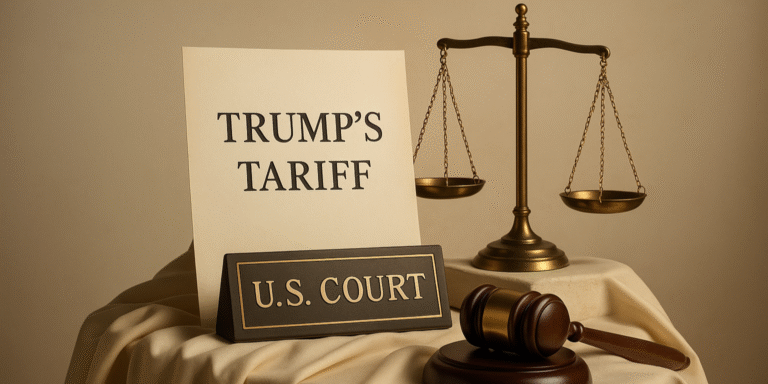A U.S. federal court has ruled that former President Donald Trump’s sweeping tariffs, often referred to as the “liberation day” tariffs, exceed his authority under the International Emergency Economic Powers Act (IEEPA). The court’s decision effectively invalidates these tariffs, which were initially imposed to address trade imbalances, particularly with China. This ruling marks a significant check on executive power and could have far-reaching implications for future U.S. trade policy.
The “liberation day” tariffs, introduced during Trump’s presidency, were part of his administration’s broader economic strategy to reduce the U.S. trade deficit and push back against what he characterized as unfair trade practices by other countries. These tariffs were applied to billions of dollars’ worth of imports, impacting industries ranging from electronics to steel. Trump justified the tariffs as a necessary response to national security threats posed by economic dependencies, as well as to address imbalances that he argued harmed American workers and manufacturers.
The court’s ruling on the tariffs represents a significant challenge to the authority of the executive branch when it comes to trade policy. The decision underscores the principle that presidential powers, particularly those granted under the IEEPA, have limits, especially when such actions have far-reaching economic consequences. The court concluded that the tariffs, which had been imposed without the necessary consultation with Congress or the appropriate use of emergency powers, overstepped the bounds of executive authority.
This legal setback for the Trump administration comes amid growing scrutiny of the use of tariffs as a foreign policy tool. While tariffs have been a cornerstone of Trump’s “America First” trade policies, they have faced criticism for their impact on U.S. consumers and businesses. Critics argue that the tariffs led to higher costs for American consumers, disrupted supply chains, and sparked retaliatory measures from key trade partners, including China, the European Union, and Canada.
The court’s decision could have broader implications for future trade policy, particularly as it sets a precedent regarding the scope of executive power in matters of international trade. The ruling suggests that any future use of tariffs by the president may require clearer justification under the law and must adhere to established protocols, including Congressional approval. This could make it more difficult for future administrations to implement large-scale tariffs without proper legal backing.
The Trump administration is expected to appeal the court’s decision, which could prolong the legal battle over these tariffs and potentially reach the Supreme Court. In the meantime, the ruling adds to the ongoing debate about the effectiveness of tariffs in achieving long-term economic goals and whether such measures should be left to the legislative branch rather than the executive branch.
For many businesses and industries affected by the tariffs, this ruling is seen as a victory, particularly those that had been hit hard by the additional costs associated with the trade barriers. However, the ultimate fate of these tariffs will depend on the outcome of the appeal process, which could take years to resolve.
As the case continues to unfold, the ruling serves as a reminder of the checks and balances inherent in the U.S. system of government and the importance of ensuring that any significant economic policy decisions are in line with constitutional limits.



